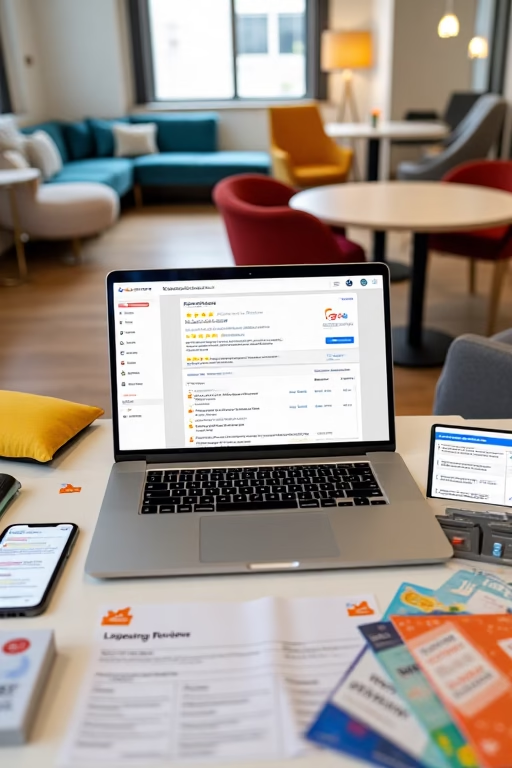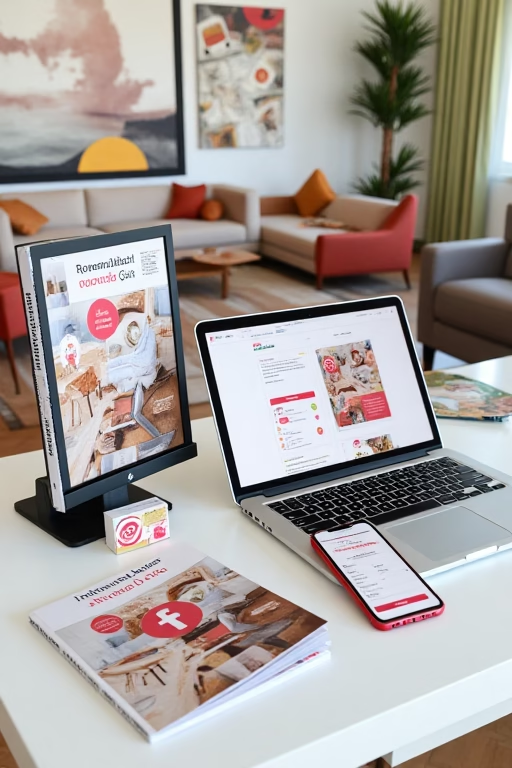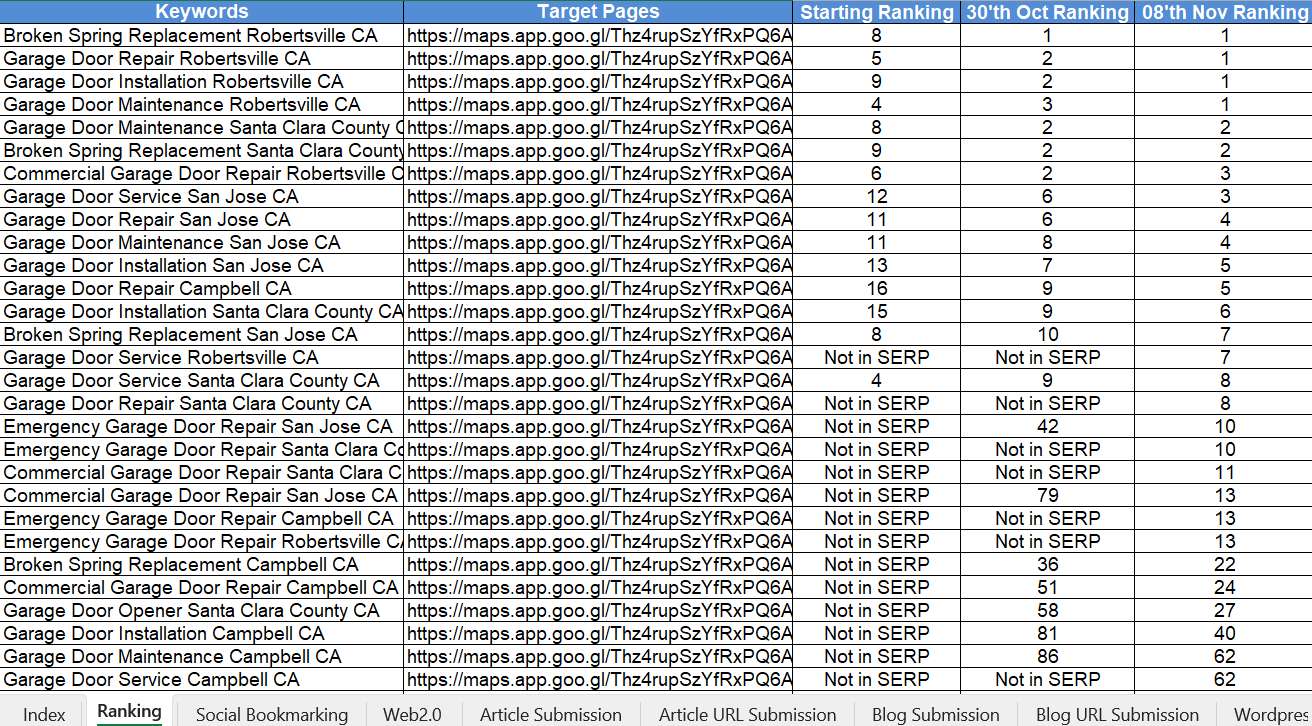Using Seasonal Trends to Drive Furniture Sales
Using Seasonal Trends to Drive Furniture Sales
Seasonal trends significantly influence consumer behavior, especially in the furniture industry. By aligning your marketing strategies and product offerings with these trends, you can effectively boost sales, attract new customers, and foster loyalty among existing ones. This comprehensive guide explores how to leverage seasonal trends to drive furniture sales, providing actionable strategies and insights to help your store thrive throughout the year.
Table of Contents
- Introduction
- Understanding Seasonal Trends
- Aligning Product Offerings with Seasons
- Creating Seasonal Collections
- Adjusting Inventory Management
- Incorporating Trendy Designs and Materials
- Seasonal Marketing Strategies
- Leveraging Online and Offline Channels
- Maximizing Sales through SEO and Advertising
- Monitoring and Analyzing Performance
- Best Practices for Seasonal Furniture Sales
- Planning Ahead
- Maintaining Flexibility
- Focusing on Customer Experience
- Utilizing Feedback and Reviews
- Collaborating with Suppliers and Partners
- Common Mistakes to Avoid
- Overlooking Seasons
- Ineffective Marketing Messages
- Poor Inventory Management
- Ignoring Data and Analytics
- Neglecting Customer Feedback
- Conclusion
- Frequently Asked Questions (FAQ)
- 25 Relevant Keywords
2. Understanding Seasonal Trends
To effectively leverage seasonal trends, it's crucial to understand what they are and how they influence consumer behavior. Seasonal trends refer to the patterns and preferences that emerge during different times of the year, driven by factors such as weather, holidays, and cultural events. By identifying and analyzing these trends, furniture stores can tailor their strategies to meet the evolving demands of their customers.
2.1 Identifying Key Seasons
Different seasons bring distinct opportunities and challenges for furniture stores. Identifying key seasons relevant to your business can help you plan effectively and capitalize on peak periods.
- Spring: A time for renewal and home improvement. Consumers are more likely to invest in new furniture to refresh their living spaces.
- Summer: Focuses on outdoor furniture and entertaining spaces. This season sees a surge in demand for patio sets, outdoor dining tables, and lounge chairs.
- Fall: Aligns with back-to-school and pre-holiday preparations. Consumers may seek functional and stylish furniture to accommodate changing needs.
- Winter: Holiday shopping peaks, making it an ideal time for promoting gift-worthy furniture pieces and festive decorations.
- Year-Round: Some trends, like minimalism or sustainable furniture, can be relevant throughout the year, offering consistent marketing opportunities.
- Example: "During spring, promote your latest indoor furniture collections with themes of renewal and fresh starts, while in summer, highlight your outdoor living products for backyard gatherings."
2.2 Consumer Behavior and Seasonality
Consumer behavior varies with the seasons, influenced by factors such as weather changes, holidays, and lifestyle shifts. Understanding these behaviors can help you anticipate demand and tailor your offerings accordingly.
- Spring: Increased interest in home renovations and decluttering. Consumers look for furniture that aligns with fresh and vibrant aesthetics.
- Summer: Preference for durable and weather-resistant outdoor furniture. Emphasis on comfort and functionality for outdoor living spaces.
- Fall: Focus on cozy and warm indoor furniture. Consumers seek pieces that enhance comfort and functionality as they prepare for colder months.
- Winter: Heightened focus on holiday-specific furniture, such as dining sets for gatherings and decorative pieces for festive settings.
- Example: "In summer, promote your range of outdoor sofas and dining tables that are perfect for hosting barbecues and summer parties, catering to consumers' desire for stylish and functional outdoor spaces."
2.3 Market Analysis Tools
Utilizing market analysis tools can help you identify and track seasonal trends effectively. These tools provide valuable data and insights that inform your strategic decisions.
- Google Trends: Analyze search trends to understand what furniture styles and products are gaining popularity during specific seasons.
- Social Media Analytics: Monitor engagement and conversations on platforms like Instagram, Pinterest, and Facebook to identify emerging trends.
- Industry Reports: Refer to industry-specific reports and publications that highlight seasonal market movements and consumer preferences.
- Sales Data Analysis: Review your own sales data to identify patterns and trends that recur each season.
- Example: "Use Google Trends to track the rise in searches for 'outdoor lounge furniture' in late spring and early summer, allowing you to adjust your inventory and marketing focus accordingly."
3. Aligning Product Offerings with Seasons
Aligning your product offerings with seasonal trends ensures that your inventory meets the current demands of your customers. This alignment not only boosts sales but also enhances customer satisfaction by providing timely and relevant products.
3.1 Creating Seasonal Collections
Developing seasonal collections allows you to showcase products that resonate with the current season's themes and consumer preferences. These collections can be promoted through targeted marketing campaigns to attract seasonal shoppers.
- Spring Collection: Feature bright colors, light fabrics, and fresh designs that reflect the season of renewal.
- Summer Collection: Emphasize outdoor-friendly materials, vibrant colors, and functional designs suitable for outdoor living.
- Fall Collection: Highlight warm tones, cozy textures, and versatile pieces that transition between indoor and outdoor settings.
- Winter Collection: Showcase elegant and festive designs, durable materials suitable for colder weather, and pieces ideal for holiday gatherings.
- Example: "Launch a summer collection that includes weather-resistant patio furniture in bright colors, promoting it through social media ads targeting outdoor enthusiasts."
3.2 Adjusting Inventory Management
Effective inventory management ensures that you have the right products available when demand peaks. Adjusting your inventory based on seasonal trends can prevent overstocking or stockouts.
- Forecasting Demand: Use historical sales data and trend analysis to predict which products will be in high demand each season.
- Stock Allocation: Allocate inventory resources to prioritize seasonal products, ensuring sufficient stock levels during peak periods.
- Supplier Coordination: Collaborate with suppliers to secure timely deliveries of seasonal products and manage lead times effectively.
- Example: "Increase stock levels of outdoor dining sets in the spring to meet the surge in demand as consumers prepare their outdoor spaces for summer."
3.3 Incorporating Trendy Designs and Materials
Staying updated with the latest design trends and materials ensures that your product offerings remain relevant and appealing to your target audience throughout the year.
- Design Trends: Keep an eye on emerging design trends such as minimalist, industrial, Scandinavian, or eco-friendly styles that gain popularity each season.
- Material Innovations: Incorporate new materials or sustainable options that align with consumer preferences and seasonal demands.
- Collaborate with Designers: Partner with designers to create exclusive pieces that reflect current trends and set your store apart from competitors.
- Example: "Introduce a line of eco-friendly outdoor furniture made from recycled materials for the summer season, appealing to environmentally conscious consumers."
4. Seasonal Marketing Strategies
Implementing targeted marketing strategies during different seasons can significantly enhance your furniture store's visibility and sales. Tailoring your marketing efforts to align with seasonal trends ensures that your campaigns are relevant and resonate with your audience.
4.1 Holiday Promotions
Holidays present excellent opportunities to boost sales through special promotions, discounts, and themed marketing campaigns. Tailoring your offers to match the spirit of each holiday can attract more customers.
- Black Friday and Cyber Monday: Offer significant discounts on popular furniture items to capitalize on the holiday shopping frenzy.
- Christmas and New Year: Promote festive furniture pieces and holiday-themed decor to encourage gift purchases and home upgrades.
- Back-to-School: Target families and students with functional and stylish study furniture, such as desks and chairs.
- Example: "Run a Black Friday sale offering up to 50% off on selected bedroom sets, advertised through email campaigns and social media ads to maximize reach and sales."
4.2 Themed Campaigns
Themed campaigns align your marketing messages and promotions with specific seasonal themes, making your campaigns more cohesive and appealing to consumers.
- Spring Cleaning: Promote storage solutions, minimalist furniture, and space-saving designs that cater to customers looking to refresh their homes.
- Summer Entertaining: Highlight outdoor furniture, dining sets, and entertaining accessories for backyard parties and gatherings.
- Fall Cozy Living: Focus on comfortable and warm indoor furniture, such as sofas, armchairs, and rugs, perfect for creating cozy living spaces.
- Example: "Create a 'Spring Refresh' campaign that features new arrivals in light fabrics and vibrant colors, supported by blog posts and social media content showcasing how to update living spaces for spring."
4.3 Content Marketing
Content marketing involves creating and sharing valuable content to attract and engage your target audience. Seasonal content can drive traffic, build brand authority, and enhance customer engagement.
- Blog Posts: Write blog articles focused on seasonal topics, such as 'Top 10 Summer Outdoor Furniture Trends' or 'How to Create a Cozy Winter Living Room'.
- Guides and How-Tos: Create guides on selecting the right furniture for different seasons or styling tips that align with seasonal aesthetics.
- Visual Content: Develop seasonal lookbooks, infographics, and videos that showcase your products in relevant settings.
- Example: "Publish a blog post titled 'Spring Home Makeover: Essential Furniture Pieces to Refresh Your Space' and share it across your marketing channels to attract readers interested in spring renovations."
4.5 Email Marketing Campaigns
Email marketing allows you to communicate directly with your customers, promoting seasonal offers and keeping them informed about new arrivals and promotions.
- Seasonal Newsletters: Send newsletters highlighting seasonal collections, special discounts, and upcoming promotions.
- Personalized Recommendations: Use customer data to send personalized furniture recommendations that align with seasonal trends.
- Exclusive Offers: Provide exclusive discounts or early access to sales for your email subscribers during peak seasons.
- Example: "Send a spring-themed email campaign featuring your new line of light and airy sofas, along with a limited-time discount code to encourage purchases."
5. Leveraging Online and Offline Channels
Integrating both online and offline channels in your seasonal marketing strategy ensures a comprehensive approach, reaching customers through multiple touchpoints and enhancing their shopping experience.
5.1 E-commerce Optimization
Optimizing your online store for seasonal trends ensures that customers have a seamless and enjoyable shopping experience, increasing the likelihood of conversions.
- Seasonal Themes: Update your website's design and visuals to reflect the current season, creating a cohesive and appealing online environment.
- Product Categorization: Organize your products into seasonal categories to make it easier for customers to find relevant items.
- Mobile Optimization: Ensure that your e-commerce site is fully optimized for mobile devices, as many customers shop on their smartphones and tablets.
- Example: "During summer, feature a dedicated section on your website for outdoor furniture, with vibrant images and easy navigation to enhance the shopping experience."
5.2 In-Store Experiences
Enhancing the in-store experience to align with seasonal trends can attract more foot traffic and encourage purchases. Creating an inviting and themed environment makes shopping enjoyable and memorable for customers.
- Seasonal Displays: Design in-store displays that showcase seasonal collections and highlight trending products.
- Interactive Elements: Incorporate interactive elements such as virtual reality setups or design stations where customers can visualize furniture in their homes.
- Events and Workshops: Host seasonal events, workshops, or styling sessions to engage customers and provide added value beyond product offerings.
- Example: "Create a winter-themed display featuring cozy sofas and warm textiles, complemented by a holiday workshop where customers can learn decorating tips using your furniture."
5.3 Integrating Omnichannel Strategies
An omnichannel approach ensures a consistent and seamless customer experience across all platforms and touchpoints. Integrating online and offline strategies enhances brand presence and customer satisfaction.
- Unified Messaging: Maintain consistent marketing messages and branding across your website, social media, email, and physical stores.
- Cross-Promotions: Promote online products in-store and vice versa, encouraging customers to explore both channels.
- Customer Data Integration: Use integrated customer data to personalize experiences and offer tailored recommendations based on their interactions across different channels.
- Example: "Implement a system where customers who browse seasonal collections online receive personalized in-store invitations to exclusive seasonal sales events."
6. Maximizing Sales through SEO and Advertising
Search Engine Optimization (SEO) and strategic advertising are crucial for increasing your furniture store's visibility and driving sales during peak seasons. By optimizing your online presence and investing in targeted advertising, you can reach a larger audience and convert more leads into customers.
6.1 Seasonal SEO
Seasonal SEO involves optimizing your website and content to align with the search behavior of consumers during different times of the year. This approach ensures that your furniture store appears prominently in search results when customers are actively looking for seasonal products.
- Keyword Optimization: Incorporate seasonal keywords into your website content, product descriptions, and blog posts to capture relevant search traffic.
- Content Creation: Develop seasonal content that addresses the needs and interests of your target audience, such as holiday decorating tips or summer outdoor furniture guides.
- Local SEO: Enhance your local SEO efforts by optimizing your Google My Business listing with seasonal photos, updates, and offers.
- Example: "During the spring season, optimize your website with keywords like 'spring furniture trends' and publish blog posts on 'Top 5 Spring Living Room Makeovers' to attract seasonal search traffic."
6.2 Pay-Per-Click Advertising
Pay-Per-Click (PPC) advertising allows you to target specific audiences and drive immediate traffic to your website. Seasonal PPC campaigns can capitalize on peak shopping periods and boost sales effectively.
- Seasonal Ad Campaigns: Create PPC campaigns tailored to seasonal products and promotions to attract relevant traffic.
- Ad Scheduling: Schedule your ads to run during peak times when your target audience is most likely to search for seasonal furniture.
- Keyword Targeting: Use seasonal keywords and long-tail phrases to enhance the relevance and performance of your ads.
- Example: "Launch a PPC campaign for your summer outdoor furniture collection, targeting keywords like 'patio dining sets' and 'weather-resistant outdoor sofas' to reach customers planning their summer gatherings."
6.3 Social Media Advertising
Social media platforms offer robust advertising options that can help you reach a highly targeted audience with your seasonal promotions. Utilizing social media advertising effectively can amplify your marketing efforts and drive more sales.
- Targeted Ads: Use the advanced targeting features of platforms like Facebook, Instagram, and Pinterest to reach specific demographics interested in seasonal furniture trends.
- Creative Ad Formats: Experiment with different ad formats such as carousel ads, video ads, and story ads to engage users and showcase your seasonal offerings dynamically.
- Retargeting Campaigns: Implement retargeting strategies to reach users who have previously visited your website or interacted with your content, reminding them of your seasonal promotions.
- Example: "Run Instagram carousel ads featuring multiple pieces from your fall collection, targeting users who have shown interest in home decor and seasonal furniture trends."
6.4 Retargeting Strategies
Retargeting involves reaching out to customers who have previously interacted with your brand but did not complete a purchase. Implementing effective retargeting strategies can help convert these potential customers into buyers, especially during peak seasons.
- Website Visitors: Target users who have visited your website or specific product pages with tailored ads that remind them of their interest.
- Cart Abandoners: Create retargeting campaigns for customers who added items to their cart but did not finalize the purchase, offering incentives to complete the transaction.
- Engaged Users: Reach out to users who have engaged with your social media content or subscribed to your newsletters, reinforcing seasonal offers and promotions.
- Example: "Set up a retargeting campaign for users who viewed your outdoor furniture section in the spring, offering a limited-time discount to encourage them to make a purchase."
7. Monitoring and Analyzing Performance
Monitoring and analyzing the performance of your seasonal strategies is essential for understanding their effectiveness and making data-driven decisions to optimize future campaigns. By tracking key metrics and utilizing analytics tools, you can gain valuable insights into your furniture store's performance throughout the year.
7.1 Key Metrics to Track
Tracking the right metrics allows you to evaluate the success of your seasonal strategies and identify areas for improvement.
- Sales Revenue: Monitor the total revenue generated during each season to assess the overall impact of your strategies.
- Conversion Rates: Track the percentage of website visitors who make a purchase, indicating the effectiveness of your marketing efforts.
- Website Traffic: Analyze the number of visitors to your website and identify trends related to seasonal campaigns.
- Customer Acquisition Cost (CAC): Calculate the cost of acquiring new customers during different seasons to evaluate the efficiency of your marketing spend.
- Average Order Value (AOV): Measure the average amount spent by customers per order, helping you understand purchasing patterns.
- Example: "During the holiday season, track the spike in sales revenue and website traffic to determine the effectiveness of your Christmas promotions and adjust future campaigns accordingly."
7.2 Using Analytics Tools
Leveraging analytics tools provides detailed insights into your performance metrics, enabling you to make informed decisions and refine your strategies.
- Google Analytics: Track website traffic, user behavior, conversion rates, and the effectiveness of your marketing campaigns.
- Social Media Insights: Utilize platform-specific analytics to measure engagement, reach, and the performance of your social media ads.
- E-commerce Platforms: Use built-in analytics tools from platforms like Shopify or WooCommerce to monitor sales trends, inventory levels, and customer behavior.
- Example: "Use Google Analytics to identify which seasonal blog posts drive the most traffic to your website and create more content around those topics to enhance engagement and sales."
7.3 Adjusting Strategies Based on Data
Data-driven adjustments ensure that your strategies remain effective and aligned with your business goals. By continuously analyzing performance data, you can optimize your approaches to maximize results.
- Identify Successful Tactics: Determine which strategies yield the best results and allocate more resources towards them.
- Address Underperforming Areas: Recognize and rectify strategies that are not meeting expectations to improve overall performance.
- Experiment and Innovate: Use insights to experiment with new ideas and innovate your seasonal campaigns, staying ahead of trends and competitors.
- Example: "If email marketing campaigns have higher conversion rates during the winter, consider increasing the frequency and personalization of your winter email campaigns to boost sales further."
8. Best Practices for Seasonal Furniture Sales
Adhering to best practices ensures that your seasonal strategies are effective, efficient, and aligned with industry standards. Implementing these practices can enhance the performance of your campaigns and contribute to sustained business success.
8.1 Planning Ahead
Proactive planning is crucial for capitalizing on seasonal trends. Preparing in advance allows you to align your inventory, marketing efforts, and operations to meet the upcoming demands effectively.
- Annual Calendar: Develop an annual marketing calendar that outlines key seasons and corresponding strategies, ensuring timely execution of campaigns.
- Inventory Forecasting: Predict seasonal demand and adjust your inventory accordingly to prevent stockouts or overstocking.
- Example: "Plan your spring marketing campaigns six months in advance, ensuring that your seasonal collections are ready for launch and your inventory levels are optimized to meet expected demand."
8.2 Maintaining Flexibility
While planning is essential, maintaining flexibility allows you to adapt to unexpected changes and seize unforeseen opportunities throughout the year.
- Adjustable Strategies: Develop strategies that can be easily modified based on real-time data and market shifts.
- Contingency Plans: Prepare contingency plans to address potential challenges such as supply chain disruptions or sudden changes in consumer behavior.
- Example: "If a sudden trend emerges during summer, such as a surge in demand for eco-friendly outdoor furniture, be ready to adjust your marketing and inventory to cater to this new interest."
8.3 Focusing on Customer Experience
Providing an exceptional customer experience throughout the year enhances customer satisfaction and loyalty, leading to repeat business and positive word-of-mouth referrals.
- Personalized Service: Offer personalized recommendations and assistance based on customer preferences and seasonal needs.
- Seamless Shopping Experience: Ensure a smooth and enjoyable shopping experience both online and in-store, with easy navigation, clear product information, and efficient checkout processes.
- Example: "During the holiday season, provide personalized gift recommendations and offer flexible delivery options to cater to the needs of busy shoppers, enhancing their overall experience."
8.4 Utilizing Feedback and Reviews
Customer feedback and reviews provide invaluable insights into their experiences and preferences. Leveraging this feedback helps you refine your strategies and improve your offerings to better meet customer needs.
- Gather Feedback: Actively seek feedback through surveys, reviews, and direct interactions to understand customer satisfaction and areas for improvement.
- Analyze Reviews: Regularly analyze customer reviews to identify common themes, preferences, and pain points related to seasonal products and services.
- Implement Changes: Use the insights gained from feedback to make informed adjustments to your product offerings, marketing strategies, and customer service practices.
- Example: "If multiple customers mention that delivery times are too long during peak seasons, work on optimizing your logistics to improve delivery efficiency and customer satisfaction."
8.5 Collaborating with Suppliers and Partners
Strong relationships with suppliers and partners are essential for ensuring the availability of seasonal products and executing successful marketing campaigns. Collaborating effectively can enhance your operational efficiency and expand your reach.
- Supplier Coordination: Communicate your seasonal inventory needs well in advance to ensure timely deliveries and prevent stock shortages.
- Joint Marketing Efforts: Partner with suppliers or complementary businesses for joint marketing initiatives, such as co-branded promotions or bundled offers.
- Example: "Collaborate with a local lighting supplier to create a bundled offer for dining room sets and lighting fixtures during the fall season, promoting a complete home makeover package."
9. Common Mistakes to Avoid
While leveraging seasonal trends can drive significant sales growth, certain common mistakes can undermine your efforts. Being aware of these pitfalls allows you to navigate them effectively and ensure the success of your seasonal strategies.
9.1 Overlooking Seasons
Neglecting to recognize and plan for seasonal trends can result in missed sales opportunities and reduced competitiveness. Ignoring the cyclical nature of the furniture market can hinder your store's growth and adaptability.
- Lack of Planning: Failing to anticipate seasonal demand can lead to inadequate inventory levels and ineffective marketing campaigns.
- Missed Opportunities: Overlooking the importance of seasonal trends means missing chances to engage with customers when they are most receptive to purchasing furniture.
- Example: "A furniture store that fails to promote outdoor furniture in the spring misses the opportunity to capture the demand from customers preparing their outdoor spaces for summer."
9.2 Ineffective Marketing Messages
Crafting marketing messages that do not resonate with the current season or fail to highlight the relevant benefits of your products can reduce the effectiveness of your campaigns.
- Lack of Relevance: Messages that are not aligned with seasonal trends may not capture the attention of your target audience.
- Generic Content: Using generic or unrelated messaging can make your campaigns less impactful and memorable.
- Example: "Promoting winter-themed furniture during the summer season can confuse customers and dilute the impact of your marketing efforts."
9.3 Poor Inventory Management
Inadequate inventory management can lead to stockouts or overstocking, both of which can negatively impact your sales and customer satisfaction.
- Stockouts: Running out of popular seasonal products can lead to lost sales and dissatisfied customers.
- Overstocking: Excess inventory can increase storage costs and tie up capital that could be used elsewhere.
- Example: "Overordering outdoor furniture for the summer season only to find that certain styles are unpopular can result in unsold inventory and financial losses."
9.4 Ignoring Data and Analytics
Failing to utilize data and analytics can prevent you from understanding the effectiveness of your seasonal strategies and making informed decisions.
- Missed Insights: Without analyzing performance data, you cannot identify what is working and what needs improvement.
- Suboptimal Strategies: Ignoring data can lead to the continuation of ineffective strategies, wasting resources and effort.
- Example: "Not tracking the performance of your holiday campaigns means you cannot determine which promotions drove the most sales, hindering your ability to replicate success in future seasons."
9.5 Neglecting Customer Feedback
Customer feedback provides valuable insights into their preferences and experiences. Ignoring this feedback can prevent you from improving your products and services to better meet customer needs.
- Opportunity for Improvement: Feedback highlights areas where your store can enhance its offerings and customer service.
- Customer Dissatisfaction: Ignoring negative feedback can lead to ongoing issues and decreased customer loyalty.
- Example: "If customers consistently mention that certain furniture pieces are difficult to assemble, addressing this feedback by providing better instructions or assembly services can improve satisfaction and reduce returns."
10. Conclusion
Leveraging seasonal trends is a strategic approach that can significantly enhance your furniture store's sales and market presence. By understanding and aligning your product offerings, marketing strategies, and operations with the rhythms of each season, you can effectively meet the evolving demands of your customers and maximize your revenue throughout the year.
Successful implementation of seasonal strategies requires meticulous planning, continuous monitoring, and the flexibility to adapt to changing market dynamics. By avoiding common mistakes and adhering to best practices, your furniture store can build a strong reputation, foster customer loyalty, and maintain a competitive edge in the ever-evolving marketplace.
Embrace the power of seasonal trends to drive your furniture sales, and position your store for sustained success and growth in the dynamic retail landscape.
Frequently Asked Questions (FAQ)
1. What are seasonal trends in the furniture industry?
Seasonal trends in the furniture industry refer to the patterns and preferences that emerge during different times of the year, influenced by factors such as weather changes, holidays, and cultural events. These trends affect consumer behavior and demand for specific types of furniture and home decor.
2. How can seasonal trends boost furniture sales?
Seasonal trends can boost furniture sales by aligning product offerings with current consumer demands, creating relevant marketing campaigns, and capitalizing on peak shopping periods. This alignment increases the likelihood of attracting and converting customers.
3. What are the key seasons for furniture sales?
The key seasons for furniture sales typically include spring, summer, fall, and winter, each associated with different consumer needs and trends. Additionally, major holidays like Black Friday, Christmas, and back-to-school periods also play a significant role in driving sales.
4. How do I identify seasonal trends relevant to my furniture store?
You can identify seasonal trends by conducting market research using tools like Google Trends, analyzing social media engagement, reviewing industry reports, and monitoring your own sales data to recognize patterns and emerging preferences.
5. What are some examples of seasonal furniture collections?
Examples of seasonal furniture collections include spring collections featuring bright colors and lightweight materials, summer collections focused on outdoor and durable furniture, fall collections with warm tones and cozy textures, and winter collections showcasing elegant and festive designs suitable for holiday celebrations.
6. How can I align my inventory with seasonal demand?
Aligning your inventory with seasonal demand involves forecasting based on historical sales data, trend analysis, and market research. Adjust your stock levels accordingly, prioritize seasonal products, and collaborate with suppliers to ensure timely deliveries of in-demand items.
7. What role does social media play in seasonal furniture marketing?
Social media plays a crucial role in seasonal furniture marketing by providing platforms to showcase seasonal collections, engage with customers through targeted campaigns, leverage influencer partnerships, and drive traffic to your online and offline stores through strategic content and advertising.
8. How can content marketing support seasonal furniture sales?
Content marketing supports seasonal furniture sales by creating and sharing valuable content that resonates with seasonal trends. This includes blog posts, guides, lookbooks, and videos that provide inspiration, tips, and information aligned with the current season, attracting and engaging potential customers.
9. What are effective seasonal promotions for furniture stores?
Effective seasonal promotions for furniture stores include discounts on seasonal collections, bundled offers, limited-time sales events, holiday-themed promotions, and exclusive deals for loyal customers. These promotions can create urgency and incentivize purchases during peak seasons.
10. How can email marketing enhance seasonal furniture sales?
Email marketing enhances seasonal furniture sales by delivering targeted messages to your customer base, promoting seasonal collections, offering exclusive discounts, and keeping customers informed about upcoming promotions and new arrivals tailored to the current season.
11. Why is inventory forecasting important for seasonal sales?
Inventory forecasting is important for seasonal sales because it helps ensure that you have sufficient stock of in-demand products while avoiding overstocking. Accurate forecasting based on seasonal trends and historical data allows for better inventory management and optimized sales performance.
12. How can I use Google Analytics to track seasonal trends?
You can use Google Analytics to track seasonal trends by monitoring website traffic, user behavior, and conversion rates during different seasons. Analyzing this data helps identify which products and campaigns perform best at specific times, allowing you to adjust your strategies accordingly.
13. What is the impact of seasonal discounts on furniture sales?
Seasonal discounts can significantly impact furniture sales by attracting price-sensitive customers, increasing purchase frequency, and clearing out inventory of seasonal products. Well-timed discounts can create urgency and boost overall sales during peak periods.
14. How do holidays influence furniture purchasing behavior?
Holidays influence furniture purchasing behavior by encouraging consumers to invest in new furniture for home gatherings, gift purchases, and home improvement projects. Holidays like Christmas, Thanksgiving, and Black Friday drive heightened consumer activity and increased sales.
15. Can seasonal trends affect online and in-store sales differently?
Yes, seasonal trends can affect online and in-store sales differently. For example, outdoor furniture may see a spike in online sales during summer, while in-store sales might increase for products requiring tactile evaluation, like sofas and mattresses. Understanding these differences allows for tailored strategies for each channel.
16. How can influencer marketing support seasonal sales?
Influencer marketing can support seasonal sales by leveraging influencers' reach and credibility to promote your seasonal collections. Influencers can create authentic content, provide reviews, and showcase your products in real-life settings, driving awareness and sales during specific seasons.
17. What are the benefits of themed marketing campaigns?
Themed marketing campaigns create a cohesive and compelling narrative around your products, making your promotions more engaging and memorable. They help differentiate your store, attract attention, and resonate emotionally with customers, driving higher engagement and sales.
18. How do I create a seasonal marketing calendar?
Creating a seasonal marketing calendar involves identifying key seasons and holidays, planning product launches and promotions around these times, scheduling marketing activities, and coordinating with suppliers and partners to ensure timely execution. This calendar helps maintain consistency and organization throughout the year.
19. What types of content are effective for seasonal marketing?
Effective content for seasonal marketing includes blog posts, lookbooks, video tutorials, social media posts, email newsletters, and customer testimonials that align with seasonal themes. This content should provide value, inspiration, and relevant information to engage your audience.
20. How can I measure the success of my seasonal marketing campaigns?
You can measure the success of your seasonal marketing campaigns by tracking key performance indicators (KPIs) such as sales revenue, conversion rates, website traffic, customer engagement, and return on investment (ROI). Utilizing analytics tools allows you to assess the effectiveness of your strategies and make data-driven adjustments.
21. What role does visual merchandising play in seasonal sales?
Visual merchandising plays a significant role in seasonal sales by creating attractive and themed displays that draw customers' attention and inspire them to make purchases. Effective visual merchandising enhances the shopping experience and highlights seasonal products in an appealing manner.
22. How can I use customer segmentation for seasonal marketing?
Customer segmentation allows you to tailor your seasonal marketing efforts to different groups based on demographics, preferences, and purchasing behavior. By targeting specific segments with personalized offers and messages, you can increase the relevance and effectiveness of your campaigns.
23. What are the best practices for seasonal email campaigns?
Best practices for seasonal email campaigns include crafting compelling subject lines, personalizing content, highlighting seasonal promotions and new arrivals, using high-quality visuals, and including clear calls-to-action. Additionally, segmenting your email list ensures that the content is relevant to each recipient.
24. How can I ensure consistency in my seasonal strategies?
Ensuring consistency in your seasonal strategies involves maintaining a unified brand message, aligning your product offerings with seasonal themes, coordinating marketing efforts across all channels, and adhering to your marketing calendar. Consistency reinforces your brand identity and enhances the effectiveness of your campaigns.
25. Why is flexibility important in seasonal marketing?
Flexibility is important in seasonal marketing because it allows you to adapt to unexpected changes and capitalize on emerging trends. Being flexible enables you to adjust your strategies in real-time, ensuring that your marketing efforts remain relevant and effective despite shifting market conditions.
25 Relevant Keywords
- Seasonal Furniture Sales
- Furniture Market Trends
- Seasonal Marketing Strategies
- Furniture Store Sales Boost
- Seasonal Furniture Collections
- Holiday Furniture Promotions
- Spring Furniture Trends
- Summer Outdoor Furniture
- Fall Decor Trends
- Winter Furniture Sales
- Seasonal Marketing for Furniture
- Furniture Sales Strategies
- Seasonal Promotions Furniture
- Trend Analysis Furniture
- Seasonal Inventory Management
- Furniture Store Revenue Growth
- Seasonal Advertising Furniture
- Furniture Sales Planning
- Seasonal Product Launches
- Seasonal Discounts Furniture
- Furniture Store Marketing Tips
- Seasonal Sales Campaigns
- Aligning Furniture with Seasons
- Seasonal Customer Preferences
- Furniture Sales Optimization
- Seasonal Marketing Best Practices








4.4 Social Media Marketing
Social media platforms are powerful tools for promoting your furniture store's seasonal offerings. Tailoring your social media content to reflect seasonal trends can enhance engagement and drive sales.